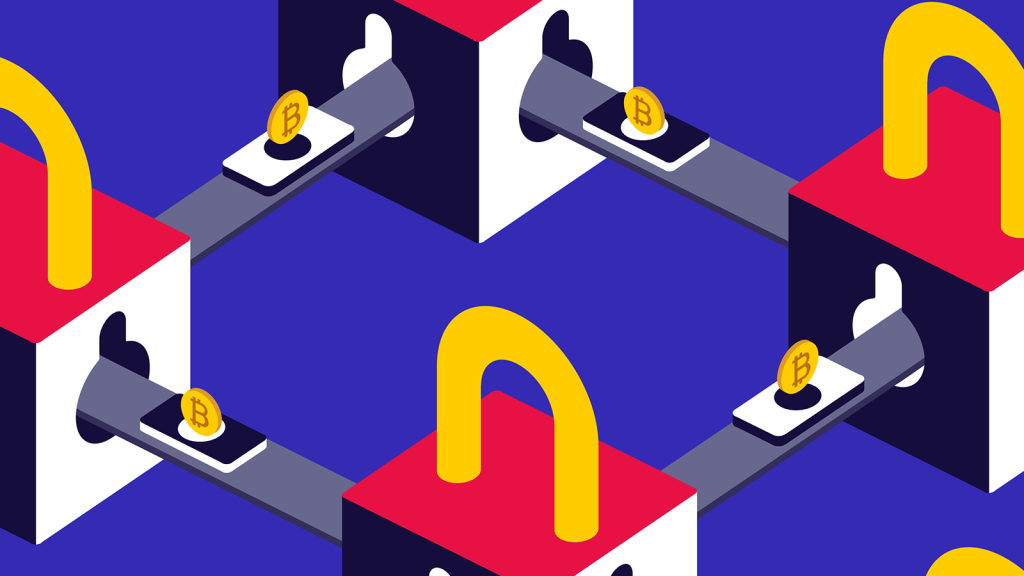Over the past few years, there has been an exponential increase in the users of blockchain technology. Since 2016, the number of people holding crypto assets on exchanges and wallets has shot up from five million to over 200 million.
There is, however, a huge disparity between those who have adopted blockchain technology and those who understand it. If you’re reading this, you’re still early and there’s plenty of time to get ahead on your crypto knowledge. There’s even evidence to prove it.
Studies suggest that as many as 98 per cent of crypto users don’t understand basic crypto concepts. When surveyed, a majority of users have asserted that ‘blockchain’ and ‘Bitcoin’ are synonymous terms or admitted to being unaware. And yes, they are absolutely two different things.
This becomes particularly apparent during times of market downturn, like what we’re witnessing now. For those constantly chasing the hype around the latest memecoins, the bear market may have little to offer. On the other hand, some may realise time off the market may be the prime time to educate and finally actually understand what they are investing in.
Learning about the blockchain can indeed seem intimidating for a beginner. There’s a lot of technical jargon floating around, and it’s tough to separate the significant details from the fluff.
This is why we’ve put together this explainer with Luno’s crypto education hub – Luno Discover, which breaks down everything you need to know about blockchain and its relationship with the crypto ecosystem, in simple terms, to aid your understanding.
The birth of blockchain
Before getting into what blockchain is, it’s important to set some context around why it came to be.
Between 2008 and 2010, the great financial crisis led to the failure of over 300 banks. This caused consumers to lose trust in the banking industry’s ability to manage money.

It became apparent that banks had significant power to mismanage funds and could do so without the knowledge of their investors.
During this time, the blockchain technology – although theorised in the 1990s – saw its first practical use as a system to facilitate transactions without the need for an intermediary (i.e. a bank). This way, people could keep control of their funds at all times and still be able to transact with ease.
Bitcoin was the first form of electronic cash, also known as digital currency, to make use of the blockchain technology. With Bitcoin, people would be able to directly exchange value with each other over the internet, without the need for a ‘middleman’.
How does blockchain technology work?
A blockchain maintains a record of transactions, much like a bank would, but it eliminates any risk of deviation or human error. This is because each transaction is verified by multiple nodes (read: computers) as opposed to one intermediary.
For example, in the case of Bitcoin, it is estimated that there are over 40,000 Bitcoin nodes in existence today.
Transactions are only recorded on the blockchain if a majority of these nodes accept that they are legitimate. This ensures that the record can’t be falsified.

Once a transaction has been recorded on a blockchain, it can’t be altered or deleted. It’s also impossible to make a crypto transaction without it being recorded on a blockchain.
So for every Bitcoin that exists, there is a record of all the transactions which it has been used in. This record is publicly available and can’t be manipulated by any individual.
This blockchain technology is also used as the foundation to create other cryptocurrencies that you might know such as Ethereum.
Why is this a big deal?
By ensuring that transactions are irreversible once recorded, blockchain technology removes the need for mediating any disputes and ensures transparency in monetary operations
Banks have to deal with problems such as chargeback claims and accounting errors, sometimes due to human error, which lead to an increase in operational costs. Ultimately, these costs also flow to consumers in the form of fees, which can get extremely high – especially when sending money across borders.
With blockchain technology, users enjoy consistently low transaction fees and much faster processing times too. While international bank transfers can take up to five days, crypto transactions can usually be processed within minutes.
Crypto apps today allow the seamless transfer of funds, and some have even introduced debit cards which can be used to make real-world purchases around the globe.

For businesses, accepting crypto payments means providing a cheaper payment alternative to avoiding credit card processing fees, which can be as high as five per cent per transaction. In Singapore, restaurants and bars such as Maison Ikkoku and Joo Bar now allow customers to pay using crypto.
Blockchain beyond finance
Although it’s primarily known for its financial utilities, blockchain technology offers a lot more than that.
Any form of transaction can be recorded on a blockchain, not only monetary ones. This opens up a whole realm of possibilities in areas such as collectibles, supply chain management, and voting systems.
With non-fungible tokens (NFTs), blockchain technology is used to verify the authenticity of digital files and its historical transactions – who created them, who were its past owners, to who currently owns them. These can range from artwork and videos, to graduation certificates and medical prescriptions.
As NFT art has become popular, scammers have attempted to sell fake copies of popular works. It’s up to buyers to do their own research and ensure that their purchases are legitimate. They can do so by tracing historical transactions all the way back to the wallet of the NFT creator.

Blockchain technology can prove useful in the management of complex supply chains as well.
For example, Walmart sends out thousands of shipments a day while working with a number of different transport providers.
Typically, the company would have to manually keep track of shipments and process payments. This process was not only expensive and time-consuming, but it would also lead to delays. Using blockchain technology, Walmart is able to synchronise all its logistics and implement an automated payment system instead.
Finally, using the blockchain for voting is another use case that has been gaining popularity.
From reality TV shows to global elections, rigged voting scandals come up all the time. Blockchain can help avoid this by ensuring transparency. Each vote gets recorded as a transaction and can be viewed and verified by all.
The rise of Web3
All of these use cases, when put together, are contributing to the emergence of Web3. While crypto is changing the world of finance, Web3 is using blockchain technology to do the same to the internet.
Currently, in the Web2 world, websites are hosted on a single server. The owners of these servers have access to user data and get to control which users are allowed to use their services.
In contrast, Web3 involves storing data across a network of computers (think nodes in the case of Bitcoin). No individual has the power to restrict access to these apps.
Take social media, for example. While Instagram and Twitter are able to moderate the content posted on their platforms, there would be no such censorship controlled by a centralised authority in the Web3 world.

It remains to be seen whether Web3 is here to replace Web2, or if the two will coexist in harmony. However, one thing’s for sure: the internet will never be the same again.
This is only the beginning of a six-part series which will help you navigate the world of crypto, NFTs, and blockchain with ease. While you wait for the next edition, head over to Luno Discover for some no-jargon learning and should you like bite-sized education pieces, subscribing to Luno’s Telegram channel and following them at @luno_sg on Instagram might suit your needs better.
This article is part of a six-part series to a no-hype beginner’s guide to crypto. You can check out the other articles here:
– Part 2: Types of coins and its risks
– Part 3: NFTs, GameFi, DeFi
– Part 4: Stablecoins
– Part 5: How to ‘DYOR’
– Part 6: Free crypto tools
This article is written in collaboration with Luno.
This partnership between Vulcan Post and Luno is for educational purposes only. Luno Singapore has been awarded in-principle approval from the MAS under the Payment Services Act 2019. Cryptocurrency is a high-risk investment. The value of cryptocurrency can fluctuate significantly and you may lose the capital you invest. Before investing, we urge you to educate yourself about cryptocurrencies and to familiarise yourself with the risks involved, which are detailed in Luno’s Risk Warning.
Featured Image Credit: Deloitte via Quartz










